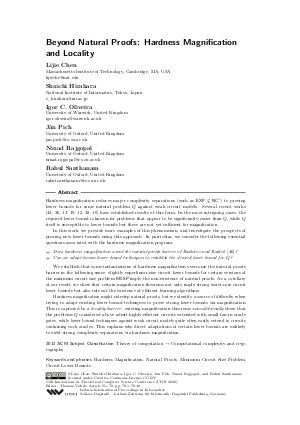LIPIcs.ITCS.2020.70.pdf
- Filesize: 0.86 MB
- 48 pages

 Creative Commons Attribution 3.0 Unported license
Creative Commons Attribution 3.0 Unported license





























Feedback for Dagstuhl Publishing